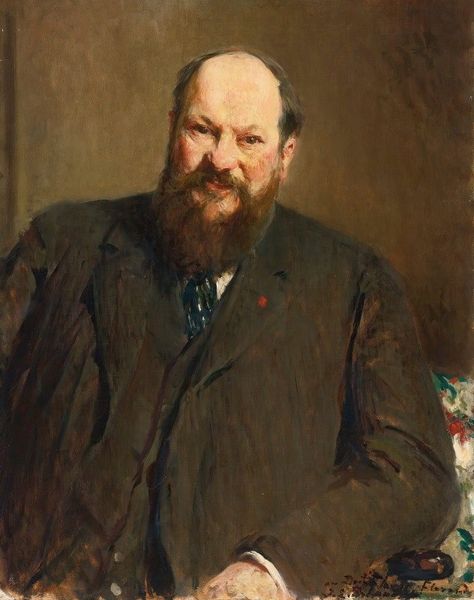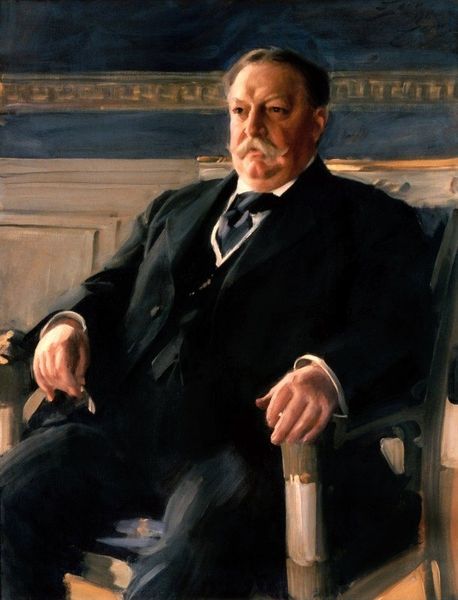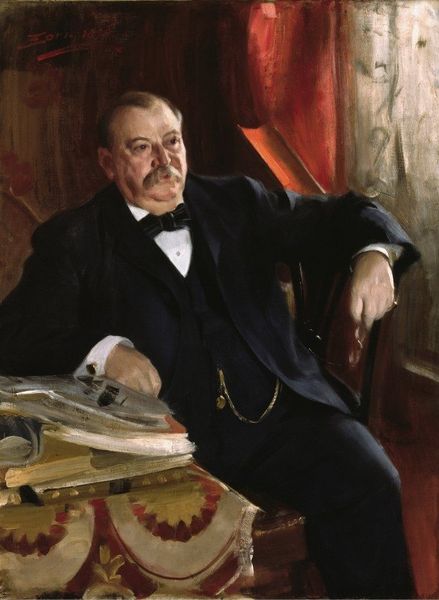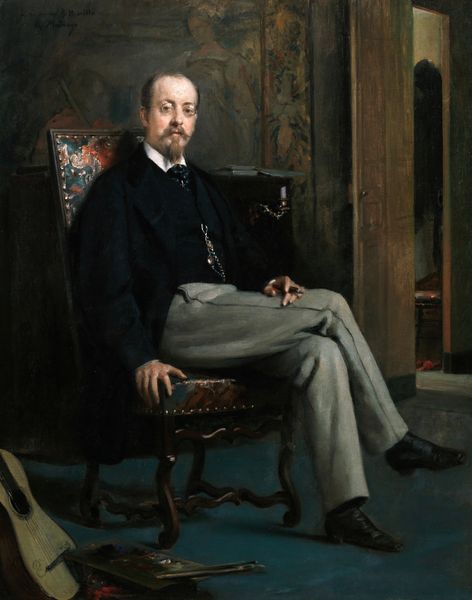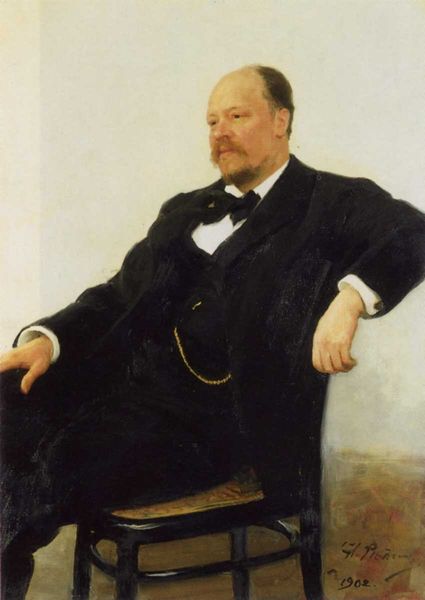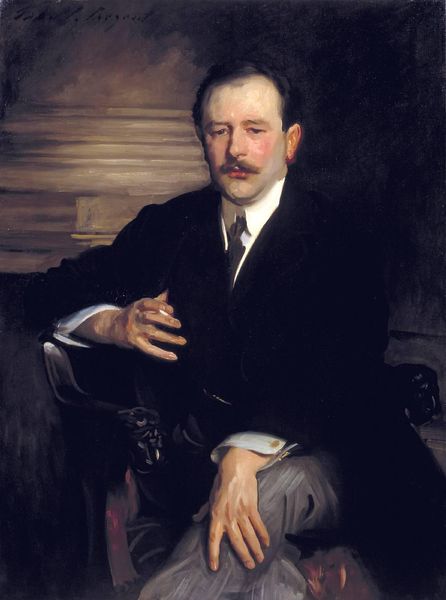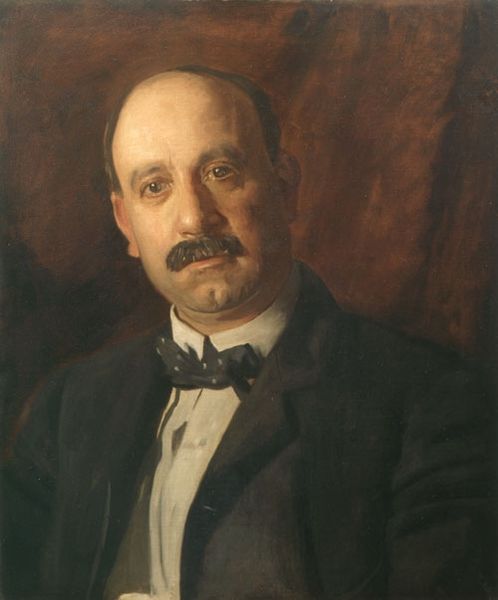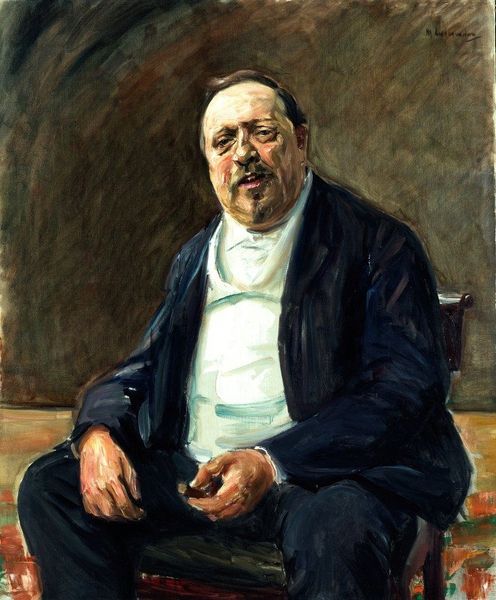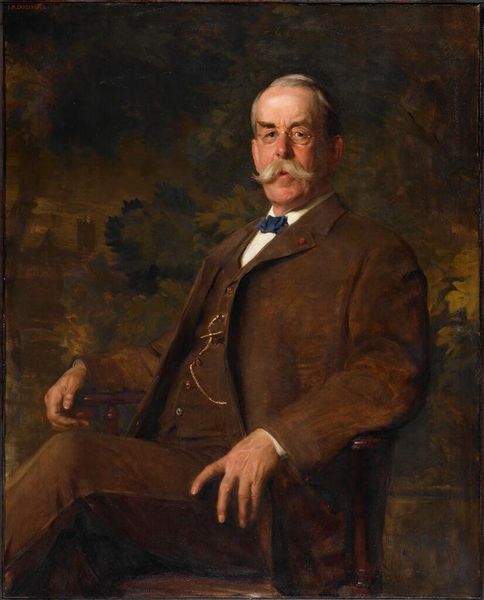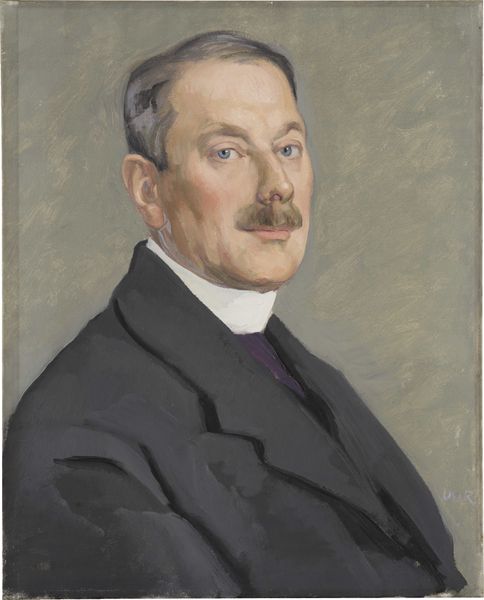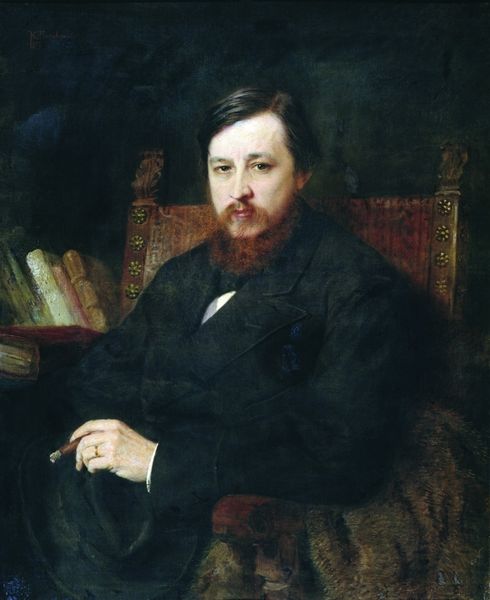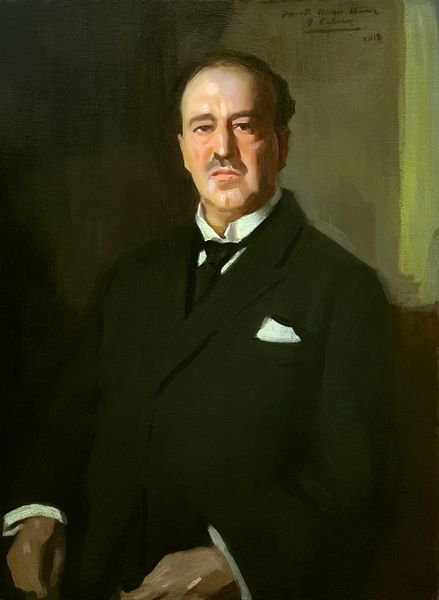
Copyright: Public domain
Curator: Welcome. Here we have Émile Friant’s "Portrait of the writer Émile Hinzelin," created in 1908. It's an oil on canvas work, demonstrating Friant’s impressive skill as a portraitist during that period. Editor: It strikes me immediately with its rather somber mood. The dark background really throws the figure forward, but his gaze... it's quite direct, isn't it? There's a sense of gravitas in how Friant has rendered him. Curator: Indeed. Hinzelin holds a book – its red cover contrasts strikingly against his dark jacket. This symbolic gesture points to Hinzelin's vocation as a writer. It signifies knowledge, creativity, and perhaps even his personal philosophy. Editor: That book, though. It's positioned almost like a heart—held close. Red can denote so many things—passion, certainly. Power, perhaps. The way the light catches the edges of the cover is the brightest part of the composition. Curator: Absolutely. Red has carried different connotations through time and culture. In this context, coupled with Hinzelin’s occupation, it could very well suggest the fire of inspiration or the revolutionary power of ideas, considering the Symbolist leanings present during this time. Perhaps the rosy complexion of the subject could allude to that reading. Editor: Interesting thought! Looking at the surface closely, I note Friant's technique. You see the distinct brushstrokes—Impressionistic touches, softening the realism, particularly around the edges of the figure and within the background. There is this beautiful, blurred haze that allows the gaze and the posture to become even more engaging. Curator: Yes, it is not simply a visual likeness but conveys his spirit, the "invisible made visible." I would be inclined to also identify the realist approach as it attempts to objectively render the world, whilst simultaneously making an appeal to more subtle emotional layers through careful iconographic encoding. Editor: The blending of these seemingly opposite styles—realism, impressionism and even subtle hints of symbolism—really encapsulates the complexities and paradoxes of the individual. Curator: Yes, what we are left with is not only a study of one man, but also an invocation of the intellectual climate and aesthetic preferences of early twentieth-century France. Editor: I have been lost within this composition’s intriguing blend of texture, light and dark, and how each lends to the mood presented by the artist.
Comments
No comments
Be the first to comment and join the conversation on the ultimate creative platform.
